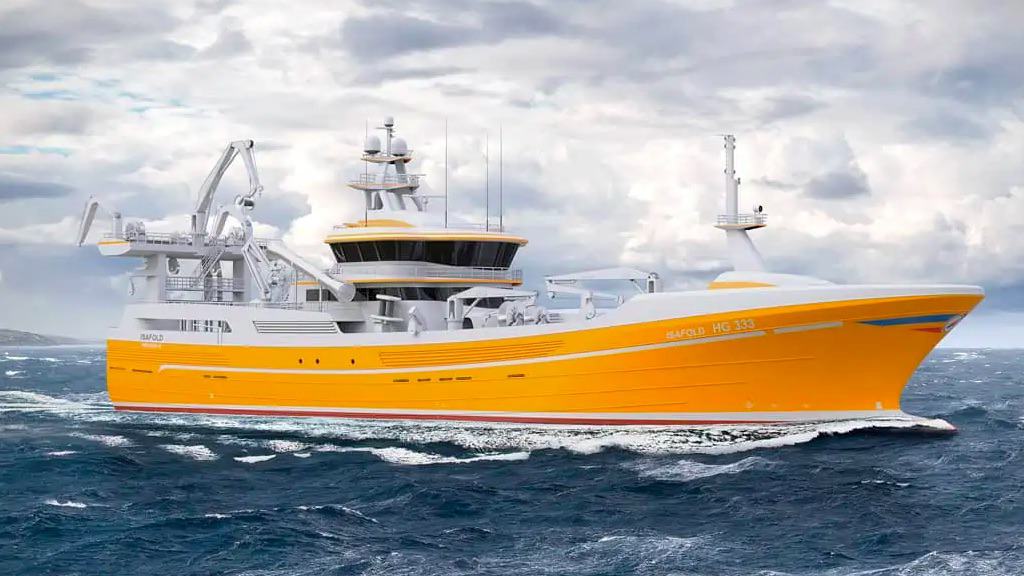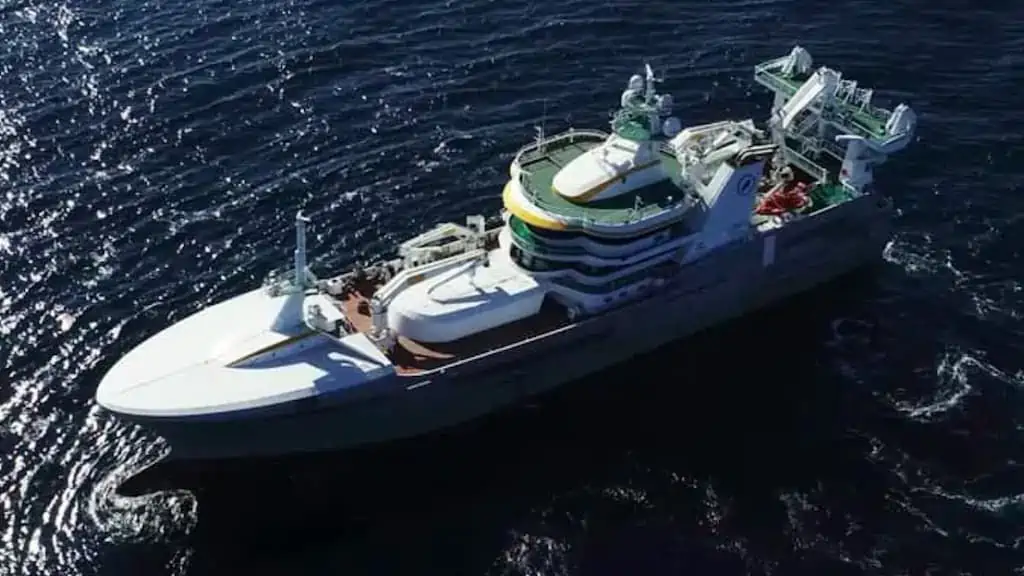Isafold HG-333 is being put through a final round of sea trials, and with only a few jobs still to be completed on board at the Zamakona yard in Spain, the new pelagic trawler/purse seiner will soon be on its way to its home port of Hirtshals.
Fishing company Rederiet Isafold has been run by Lise Bjørn Jørgensen and Karsten Mølgaard since 2004 and in 2006 they were trailblazers in ordering what was then the largest vessel in the Danish pelagic fleet. That Isafold has fished very effectively over the years, but is no longer the largest in the fleet.
The reasoning behind the decision to invest in a new vessel is that the primary target species of herring and mackerel are increasingly distant from the Danish coast and a higher capacity, more energy-efficient vessel makes economic sense.

The new Isafold is designed by Salt Ship Design, with an overall length of 87 metres, a 20 metre beam and a 3800 cubic metre capacity in its RSW tanks. It is laid out as a combination pelagic trawler and purse seiner.
‘A number of trials have been carried out, and now there are some adjustments to be made and some final paintwork that needs to be completed before we can take delivery of a safe, modern and energy-efficient fishing vessel,’ said Rederiet Isafold’s CEO Lise Bjørn Jørgensen.
‘We have been very closely involved in the construction process, and now we look forward to putting the focus on fishing itself.’
This is a remarkable and innovative vessel, with diesle-electric propulsion and high-efficiency permanent magnet electric winches.
A 1130kW/h battery pack and a bank of five medium-speed diesel generators ensure optimal power levels, and the twin propeller provide maximum propulsion efficiency and high manoeuvrability, especially when towing trawl gear.
‘For Salt Ship Design, it’s a milestone to work with such an environmentally conscious and future-oriented shipping company as Lise and Karsten represent. There are not many people who take the extra investment in order to fish as energy-efficiently as possible, so it is very important for Salt to take part in such a quantum leap as the new Isafold is,’ said Egil Sandvik at Salt Ship Design.
‘It has been a fantastic experience to be out and test the new vessel and feel the effect of diesel-electric operation. There is a world of difference in terms of noise and vibrations,’ Karsten Mølgaard said.
‘We found that this larger vessel than we are used to has very good handling qualities and I think we will greatly benefit from the broad hull both in terms of stability, seakeeping and the wide working deck aft. The decision to once again get a larger vessel feels absolutely right in terms of efficiency, quality and, not least, climate footprint, as CO2 emissions are significantly reduced per kilo caught fish.’
Together with skipper Kristian Larsen and five other crew members, Karsten Mølgaard has taken on board for all of the sea trials.
‘The option to automatically switch off one or more of the five diesel engines in relation to the power we need will be very effective and a big step in an environmentally sound direction.’





